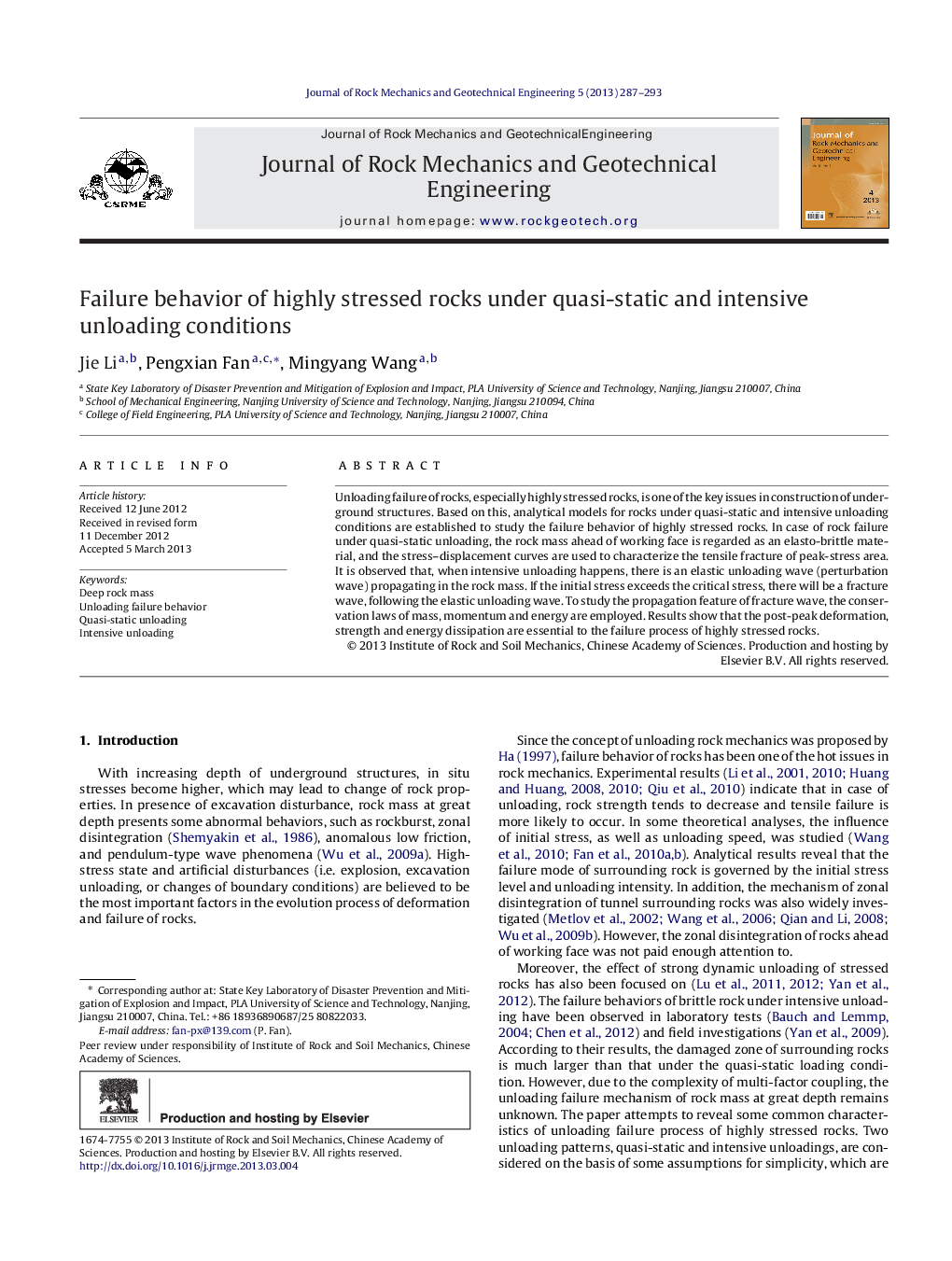| Article ID | Journal | Published Year | Pages | File Type |
|---|---|---|---|---|
| 286626 | Journal of Rock Mechanics and Geotechnical Engineering | 2013 | 7 Pages |
Unloading failure of rocks, especially highly stressed rocks, is one of the key issues in construction of underground structures. Based on this, analytical models for rocks under quasi-static and intensive unloading conditions are established to study the failure behavior of highly stressed rocks. In case of rock failure under quasi-static unloading, the rock mass ahead of working face is regarded as an elasto-brittle material, and the stress–displacement curves are used to characterize the tensile fracture of peak-stress area. It is observed that, when intensive unloading happens, there is an elastic unloading wave (perturbation wave) propagating in the rock mass. If the initial stress exceeds the critical stress, there will be a fracture wave, following the elastic unloading wave. To study the propagation feature of fracture wave, the conservation laws of mass, momentum and energy are employed. Results show that the post-peak deformation, strength and energy dissipation are essential to the failure process of highly stressed rocks.
